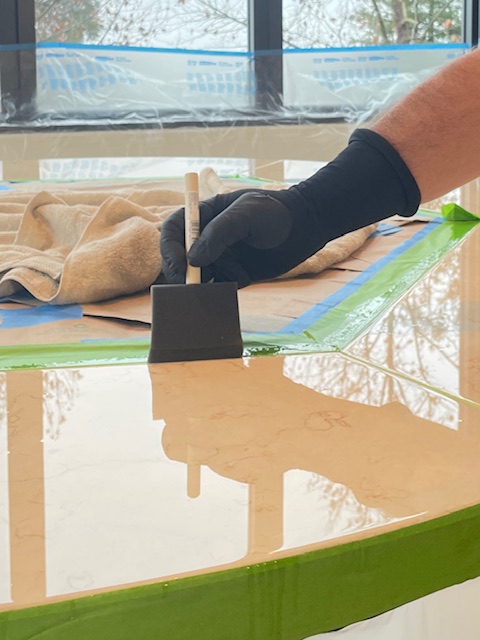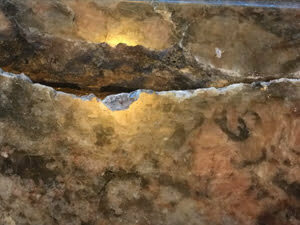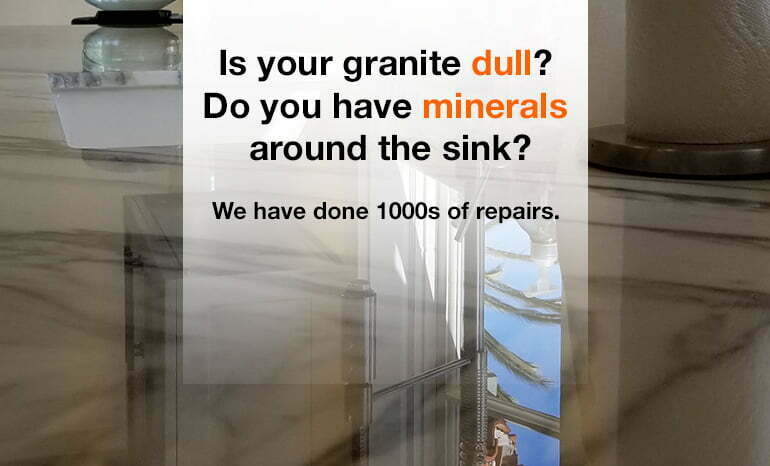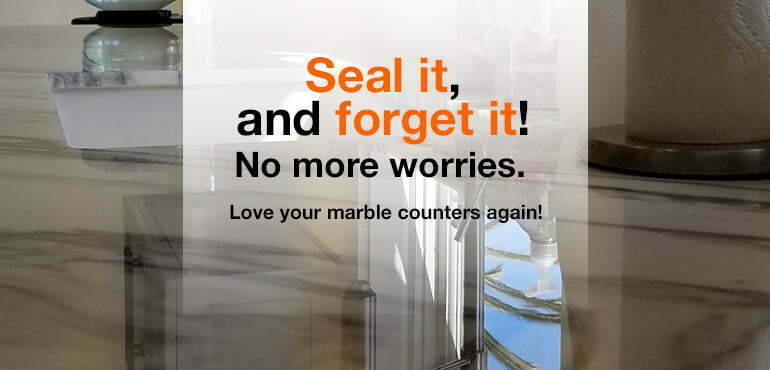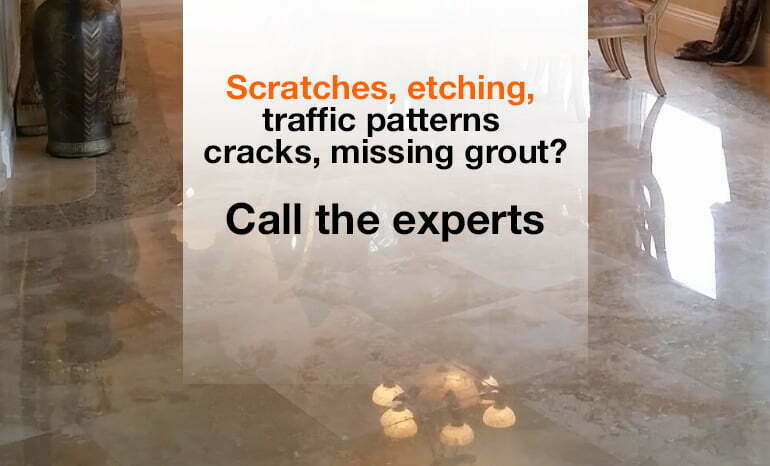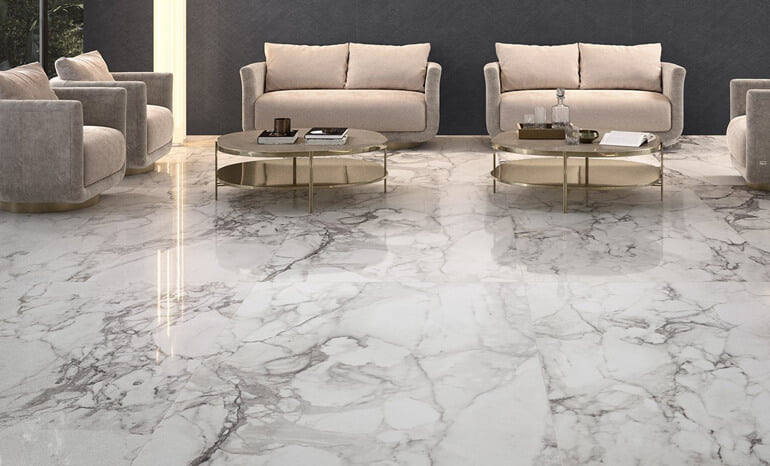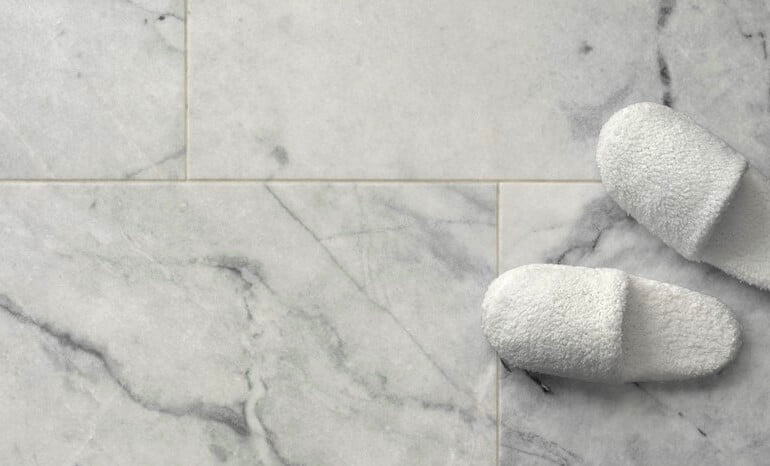For many homeowners, the allure of marble has never been just about its timeless elegance. It’s the story it tells, the touch of nature it brings into our homes, and the unique character it adds to our spaces. Yes, marble is a natural stone, but it’s also so much more. Let’s delve into the world of marble, exploring its origins, types, and how to incorporate and care for it in your interiors.
The Origins and Types of Marble
Marble has fascinated architects, sculptors, and homeowners alike for centuries, not just for its strength and durability but for its unparalleled beauty and the touch of elegance it adds to any space it graces. But where does marble come from, and how does it achieve its distinctive appearance?
The Geological Marvel Behind Marble
Marble’s journey begins deep beneath the Earth’s surface, where limestone, a sedimentary rock composed mainly of calcite, undergoes a transformation. This process, known as metamorphism, occurs under conditions of intense heat and pressure, causing the limestone to recrystallize. The minerals within the limestone undergo a chemical reformation, resulting in the beautiful and varied patterns that marble is renowned for.
This metamorphic process not only alters the stone’s composition but also its texture and color, giving rise to the many types of marble we see today. The presence of different minerals and impurities within the limestone, such as clay, iron oxides, or bituminous material, contributes to the wide array of colors and veining in marble. From the pure white of Carrara marble, beloved by sculptors like Michelangelo, to the dramatic veins of the Emperador, which adorns floors and countertops, each piece of marble is a unique piece of Earth’s history.
A World of Marble
Marble quarries are found around the globe, with each region offering its distinct variety of this natural stone, reflecting the geological conditions under which it was formed.
- Carrara Marble: Sourced from the Carrara region in Italy, this marble is famed for its high quality and has been used in some of the world’s most famous sculptures and buildings. Its white to blue-gray background, laced with soft, feathery veins, makes it a favorite for both traditional and contemporary designs.
- Calacatta Marble: Also from Italy, Calacatta marble is rarer and often comes with a white background and more dramatic, larger veins in shades of gray and gold. It’s considered a luxury stone, ideal for statement pieces and accents.
- Emperador Marble: Originating from Spain, Emperador marble ranges from light to dark brown, with fine grains and irregular veins in hues of white, beige, and occasionally gold. It adds warmth and richness to any interior.
- Crema Marfil Marble: Another gem from Spain, Crema Marfil is known for its creamy beige background with subtle veining. Its understated elegance makes it versatile for both floors and walls in various settings.
- Green Marble: India is famous for its breathtaking Green marble, characterized by a deep, rich green background with white and light green veining. It’s often used to add a touch of opulence to spaces.
Choosing Your Marble
Selecting the right type of marble for your home involves considering the stone’s origin, color, and veining, which should complement your space’s overall design theme. It’s also important to think about the marble’s finish – polished for a glossy look that highlights the stone’s veining, honed for a matte finish that offers a more subtle elegance, or brushed for a textured feel that adds depth and character.
How Marble’s Composition Affects Its Color and Pattern
Marble’s enchanting colors and intricate patterns are not just surface-level beauty. They are the result of complex geological processes and the stone’s unique composition. Here’s how the composition of marble directly influences its distinct appearance:
The Role of Mineral Composition in Marble’s Color
The primary component of marble is calcite, derived from limestone. The color of marble largely depends on the presence and concentration of various minerals and impurities within the calcite. For example:
- Iron Oxides: Minerals such as hematite and limonite can impart red, pink, or yellow hues to marble, adding warmth and vibrancy to the stone.
- Graphite and Bituminous Materials: These carbonaceous substances contribute to dark gray or black streaks, offering a stark contrast to the marble’s base color and adding dramatic flair.
- Serpentine: The presence of serpentine results in green marble, giving it a rich, verdant appearance that’s both striking and elegant.
Each type of impurity interacts with the calcite differently, resulting in a wide spectrum of colors that make each marble slab unique. From the soft whites and creams to bold greens and reds, the mineral composition is the artist behind the marble’s palette.
Veining: A Result of Geological Processes
The beautiful and intricate veining that marble is known for is the result of impurities trapped within the limestone at the time of its metamorphosis. As the limestone transforms into marble under intense heat and pressure, these impurities crystallize and form veins. The veining pattern can also be influenced by external forces such as tectonic shifts, which can stretch and distort the appearance of the veins, adding to the stone’s uniqueness.
- Linear Veins: Often created by the uniform flow of mineral impurities, linear veins give marble a sleek and streamlined look.
- Feathery Veins: These are softer and more diffuse, creating a gentle and organic pattern that mimics natural elements like leaves or feathers.
The Impact of Crystal Size on Marble’s Texture
The size of the calcite crystals in marble also plays a significant role in the stone’s final appearance. Marble with larger crystals tends to have a more pronounced sparkle and depth, making it ideal for areas where a striking visual impact is desired. In contrast, marble with finer crystals offers a more subtle sheen and smoother texture, lending a soft and elegant ambiance to the space.
Choosing Marble Based on Composition
Understanding how marble’s composition affects its color and pattern can guide homeowners in selecting the right marble for their space. Consider the room’s lighting, size, and overall decor style when choosing marble with specific colors and veining patterns. For instance, a brightly lit bathroom might benefit from the soft, serene patterns of Carrara marble, while a dramatic entryway could be elevated with the bold veining of Calacatta marble.
Marble’s composition is a testament to nature’s artistry, with each slab telling a story of geological transformations and the earth’s rich tapestry of minerals. By appreciating the nuances of marble’s composition, homeowners can make informed decisions that bring out the best in their interiors, creating spaces that are not only beautiful but also resonant with the depth of natural history.
Choosing the Right Marble for Your Interiors
Selecting the perfect marble for your home is about balancing aesthetics and practicality. Consider the space’s use, the marble’s finish, and, importantly, your lifestyle. Polished marble, while stunning, may be prone to scratches and etching, making honed or brushed finishes a more forgiving choice for high-traffic areas.
Choosing the Right Marble for Your Interiors
When it comes to integrating marble into your home, the choice goes beyond merely picking a color or pattern that catches your eye. It’s about finding the right match that complements your lifestyle, interior design, and maintenance commitment.
Consider the Space
Start by considering the space where the marble will be installed. High-traffic areas like kitchens and living rooms might benefit from darker marbles with more pronounced veining, which can better conceal wear and stains. Bathrooms and accent areas, on the other hand, could be ideal for lighter, more delicate marble that brightens the space.
Think About Lighting
Marble’s appearance can significantly change under different lighting conditions. Natural light can enhance the stone’s depth and translucency, making it important to consider how sunlight interacts with your chosen marble throughout the day. Artificial lighting, meanwhile, can highlight or soften the marble’s color and texture, so think about the mood you want to create in the space.
Lifestyle Considerations
Your lifestyle is a crucial factor in choosing the right marble. Families with young children or pets might prioritize durability and stain resistance, opting for marbles with a honed finish that masks scratches better than a polished surface. Those who entertain frequently may choose a marble that makes a bold statement, becoming a conversation piece in its own right.
Sample Swatches
Before making a final decision, obtain sample swatches of your preferred marble options. Observe how they complement your home’s existing decor, furniture, and color scheme under various lighting conditions. This step ensures that the marble not only meets your aesthetic preferences but also enhances the overall ambiance of your home.
Caring for Marble Surfaces in the Home
Marble, while durable, requires specific care to maintain its natural beauty and integrity over time. Here’s how to keep your marble surfaces looking their best:
Regular Cleaning
For daily cleaning, use a soft cloth or mop with warm water and a pH-neutral cleaner formulated for natural stone. Avoid acidic or abrasive cleaners, as they can etch the marble’s surface. Wipe up spills immediately to prevent staining, especially from acidic substances like wine, coffee, and citrus juices.
Dealing with Scratches and Stains
Scratches can often be buffed out with a little marble polish or a felt pad. For deeper scratches or chips, a professional may need to sand and re-polish the surface. Stains can be tackled with a poultice made from baking soda and water for oil-based stains, or hydrogen peroxide for organic stains. Apply the poultice, cover with plastic wrap, and leave it to act for 24-48 hours before rinsing.
Restoring Shine
Dull marble can be revitalized with a marble polish available at most home improvement stores. Follow the product instructions carefully, using a soft cloth to apply the polish in circular motions. For extensive dullness or etching, consider hiring a professional stone restoration service to re-polish the surface.
Sealing Marble
Sealing is critical to protecting marble from stains and etching. Choose a high-quality sealer designed for natural stone, and apply it according to the manufacturer’s instructions, usually every 6 to 12 months depending on usage. Test the sealant’s effectiveness by dropping water on the surface; if it beads up, the seal is intact. If it soaks in, it’s time to reseal.
By carefully selecting the right marble for your space and committing to its care, you ensure that your stone surfaces remain a source of pride and beauty in your home for years to come. Whether it’s choosing marble that aligns with your lifestyle or mastering the art of maintenance, a thoughtful approach to marble can yield timeless elegance and enduring charm.
Daily and Deep Cleaning of Marble Surfaces
Maintaining the classic elegance of marble requires a commitment to regular care. By distinguishing between daily cleaning routines and periodic deep cleaning efforts, you can ensure your marble surfaces retain their natural beauty and longevity.
Daily Cleaning: Preserving Everyday Elegance
Daily cleaning is your first line of defense against the gradual buildup of dirt and grime that can dull marble’s appearance.
- Soft Cloth and Warm Water: Begin with the simplest method. Use a soft, damp cloth and warm water to wipe down surfaces. This gentle approach is often enough to maintain the stone’s cleanliness without exposing it to potentially harmful chemicals.
- pH-Neutral Cleaners: For slightly more thorough daily cleaning, opt for a pH-neutral cleaner specifically formulated for natural stone. Spray a small amount onto the marble surface and wipe with a soft cloth. Avoid over-wetting the stone to prevent water stains.
- Immediate Spill Cleanup: Marble is particularly susceptible to staining due to its porous nature. Acidic substances like wine, coffee, and fruit juice can cause etching if not promptly addressed. Blot spills immediately with a clean, dry cloth; do not rub, as this can spread the stain.
Deep Cleaning: Restoring Deep-Seated Beauty
While daily cleaning maintains surface-level cleanliness, deep cleaning rejuvenates and preserves the marble’s deeper luster.
- Stain-Specific Solutions: Identify the type of stain (organic, oil-based, ink, etc.) and apply a suitable poultice. A poultice is a paste-like cleaning agent that draws out the stain from the marble. For organic stains, a mixture of 12% hydrogen peroxide and a few drops of ammonia works well. For oil-based stains, use a combination of baking soda and water.
- Steam Cleaning: For a more profound clean without the use of harsh chemicals, consider steam cleaning. This method is especially effective for marble floors, penetrating the pores of the stone to lift dirt and grime. Ensure your steam cleaner is suitable for use on natural stone surfaces.
- Professional Grade Products: Sometimes, off-the-shelf cleaning solutions don’t provide the desired results for deep stains or discoloration. In these cases, professional-grade marble cleaners can offer a more potent solution. Always follow the product instructions to avoid damaging the marble.
Adopting a regimen of daily light cleaning, along with periodic deep cleaning, polishing, and sealing, ensures that your marble surfaces remain as captivating as the day they were installed. This balanced approach to maintenance allows you to enjoy the timeless elegance of marble without the worry of permanent damage or wear.
Navigating the Delicate Terrain of Marble Maintenance
Marble, with its unparalleled elegance and timeless beauty, is as susceptible to the whims of daily life as any other natural stone. The very features that define its allure – its softness and porosity – also make it vulnerable to scratches and stains. Understanding how to navigate these challenges is essential for preserving the stone’s pristine condition.
Addressing Scratches: Precision and Patience
Scratches on marble can range from superficial marks barely noticeable to the touch, to deeper grooves that catch the light and mar the stone’s smooth surface. The approach to minimizing these blemishes combines gentle precision with a patient methodology.
- Superficial Scratches: For light scratches, a specialized marble polishing powder can be a homeowner’s first line of defense. Applied with a soft, damp cloth and rubbed in circular motions, this powder can blend minor scratches into the surrounding surface, restoring a uniform finish.
- Deeper Scratches: More pronounced scratches require a careful sanding process, using fine-grit sandpaper. This method should be approached with caution, as aggressive sanding can create a dip in the surface or alter the finish of the surrounding area. It’s often best left to professionals who can skillfully sand and re-polish the marble to its original luster.
Confronting Stains: A Tactical Approach
Stains on marble can be as varied as the substances that cause them, each requiring a tailored approach to removal without compromising the stone’s integrity.
- Organic Stains: Substances like food, coffee, and wine can leave behind colored stains. A poultice made from mixing a cleaning agent (such as hydrogen peroxide for light-colored marble or acetone for dark-colored marble) with an absorbent material (like talc) creates a paste that, when applied to the stain, draws it out as it dries.
- Oil-Based Stains: Cooking oils and cosmetics can penetrate the surface, leaving dark spots. A poultice using a solvent like acetone or ammonia is effective in breaking down the oil, allowing the absorbent material to pull it from the stone.
- Inorganic Stains: Metal rust, ink, and other non-organic substances require specific cleaners based on the stain’s nature. For rust, a commercial rust remover safe for marble can be used, while ink stains may respond well to acetone or bleach, depending on the marble’s color.
Restoring the shine to dull marble is a nuanced process that requires understanding the stone’s unique properties and the reasons behind its loss of luster. Marble, a metamorphic rock primarily composed of calcite, is prized for its beauty and shine but can become dull over time due to wear, abrasion, or exposure to acidic substances. This guide aims to provide homeowners with sophisticated, yet accessible, methods for reviving the natural beauty of their marble surfaces.
Identifying the Cause of Dullness
The first step in restoring shine is identifying why the marble has become dull. Common causes include:
- Etching: Reaction from acidic substances (like lemon juice or vinegar) that leave dull spots or rings.
- Scratches: Fine scratches from dust, grit, or abrasive cleaning tools can accumulate, diminishing shine.
- Wear and Tear: High traffic areas can lose their polish over time due to constant use.
- Improper Cleaning: Use of harsh cleaners or scrub pads can erode the surface.
Understanding the underlying issue is crucial for choosing the right restoration method.
Surface Cleaning
Before attempting to restore the shine, thoroughly clean the marble surface to remove any dirt, debris, or residues that might interfere with the restoration process. Use a soft cloth or mop with a pH-neutral cleaner designed for natural stone. Avoid acidic cleaners and never use vinegar or lemon-based solutions, as these can exacerbate dullness.
Polishing Dull Marble
For mild etching and general dullness, marble polishing powder is an effective solution. This specialized compound, when applied with a soft cloth and a little elbow grease, can buff away minor imperfections and restore the stone’s natural shine. Follow the product’s instructions carefully, using circular motions to polish the surface evenly.
- DIY Polishing: Mix baking soda with water to create a soft paste for a gentle, homemade polish. Apply the paste over the marble, then use a soft cloth to buff the surface. Rinse with clean water and dry with a soft towel.
Dealing with Deep Etching and Severe Dullness
For marble surfaces suffering from deep etching or significant dullness, the restoration process may require more intensive treatments:
- Professional Re-polishing: Sometimes, the only way to restore the shine to severely dulled or etched marble is through professional re-polishing. Stone restoration experts use diamond abrasives and specialized equipment to sand down the surface and restore its original polish.
- Honing: For a smooth, matte finish, honing can be an alternative to polishing. This process involves lightly sanding the surface to achieve a uniform, non-glossy finish that can hide imperfections and wear.
Sealing After Polishing
Once the marble’s shine has been restored, sealing the surface is an essential final step. A quality marble sealer will protect the stone from staining and etching, making it easier to maintain its shine over time. Choose a sealer specifically designed for marble and apply it according to the manufacturer’s instructions. Sealing not only preserves the shine but also extends the life of the marble.
Preventative Care and Maintenance
Maintaining the shine of marble flooring and surfaces requires ongoing care and preventative measures:
- Use Protective Pads and Rugs: In high-traffic areas, use non-slip rugs or mats to protect the floor from wear and debris.
- Coasters and Trivets: Always use coasters under glasses and trivets under hot dishes to prevent etching and heat damage.
- Immediate Cleanup: Spills should be wiped up immediately to prevent staining and etching.
- Regular Dusting and Cleaning: Use a soft, dry cloth to dust marble surfaces regularly and clean with a pH-neutral cleaner as needed.
By understanding the factors that contribute to marble’s dullness and employing the right restoration and maintenance techniques, homeowners can ensure their marble surfaces remain as lustrous and inviting as when they were first installed. Restoring the shine to marble not only enhances the beauty of your home but also preserves the value and integrity of this exquisite natural stone.
Sealing Marble: Why, When, and How
Sealing marble is like putting a protective coat on your favorite jacket; it’s about keeping it safe from rain or stains. Marble, a beautiful and popular stone used in homes, needs this kind of protection too. Here’s a simple guide on why sealing marble is important, when you should do it, and how it’s done.
Why Seal Marble?
Imagine you spill some juice on your marble countertop. Without sealing, the marble might soak up the juice, leaving a stain that’s hard to remove. Marble isn’t just any rock; it’s like a sponge for spills because of its tiny holes. Sealing fills these holes and creates a barrier that keeps spills on the surface, making them easier to clean.
Protection from Stains: Sealing keeps spills from soaking into the marble, preventing stains.
Makes Cleaning Easier: With sealing, cleaning is a breeze since spills won’t penetrate the surface.
Preserves Beauty: Keeping your marble looking new is easier when it’s sealed, ensuring its beauty lasts longer.
When to Seal Marble
Not all marble needs sealing at the same time. It depends on how much you use it and what kind of marble you have. A simple way to check if it’s time to seal your marble is the water test. Just put a few drops of water on the marble. If the water beads up, you’re good. If the water soaks in, leaving a dark mark, it’s time to seal.
After Installation: Seal marble right after it’s installed to start protecting it immediately.
High-Use Areas: Kitchens or bathrooms might need sealing once a year because they get used a lot.
Less Used Areas: Floors or walls in areas that aren’t used much might only need sealing every two to four years.
How to Seal Marble
Sealing marble isn’t too hard, and you can do it yourself. Just follow these steps, and you’ll be on your way to protecting your marble.
- Choose the Right Sealer: Pick a sealer made for marble. There are different types, so read the label to make sure it’s suitable for your marble’s finish.
- Clean the Marble: Before sealing, clean the marble well. Make sure there’s no dirt, dust, or spills on it. Let it dry completely because sealing it while it’s wet won’t work well.
- Apply the Sealer: Wear gloves to keep your hands clean. Use a soft cloth or brush to apply the sealer evenly on the marble. Make sure you cover every bit of it. Follow the directions on the sealer’s bottle for the best results.
- Let It Dry: After applying the sealer, you’ll need to wait. The sealer needs time to soak into the marble and dry. This could take a few hours or even overnight. Check the sealer’s instructions to see how long it takes.
- Test It: Once it’s dry, do the water test again. Drop a few water drops on the marble. If the water beads up, you’ve done a great job sealing it. If not, you might need to apply another coat.
- Keep It Up: Remember, sealing marble isn’t a one-time job. You’ll need to reseal it now and then to keep it protected.
Sealing marble helps it stay beautiful and makes your life easier when it comes to cleaning. Whether it’s a kitchen counter that sees a lot of action or a marble floor in your living room, sealing it properly means you’ll enjoy its beauty for many years. Just like taking care of anything valuable, a little effort goes a long way.
What exactly is marble, and is it considered a natural stone?
Marble is indeed a natural stone, cherished for its beauty and used in various architectural and artistic endeavors. It's formed from limestone that has undergone a transformation under high pressure and intense heat within the Earth. This process, known as metamorphism, changes the crystal structure and composition of the limestone, turning it into marble.
How is marble formed?
Marble forms when limestone, a sedimentary rock made mostly of calcite (a form of calcium carbonate), is subjected to high heat and pressure beneath the Earth's surface. This process, called metamorphism, causes the limestone to recrystallize, growing new, larger calcite crystals, and merging together to form the solid, sparkling stone we know as marble.
What does pure marble look like?
Pure marble is typically very white and almost translucent, with a smooth surface that can be polished to a high shine. The purest form of marble is made entirely of calcite, which gives it a striking white appearance. However, marble can take on various colors and patterns depending on the presence of other minerals during its formation.
What distinguishes marble from other natural stones?
Marble is distinguished from other natural stones by its unique formation process and resulting characteristics. Unlike granite, which is an igneous rock formed from cooled magma and is very hard, marble is softer and more porous, making it easier to carve and polish. Marble also typically features veins of various minerals, which create distinctive patterns and colors, unlike the more uniform appearance of stones like quartzite.
What rock does marble come from?
Marble originates from limestone, a sedimentary rock. Through the geological process of metamorphism, where limestone is subjected to intense heat and pressure, its calcite grains grow and interlock, transforming it into marble. This process not only changes the texture and composition of the limestone but also enhances its natural beauty, resulting in the luxurious stone known as marble.
What makes marble unique?
Marble stands out because of its deep, rich veining and the way it shines after polishing. This natural stone is formed from limestone under intense heat and pressure deep in the Earth, making each piece of marble unique. With colors ranging from pure white to black, and a variety of hues in between, marble has a distinctive appearance that has been valued for centuries in sculpture and architecture.
How can you tell the difference between marble and quartz?
Telling the difference between marble and quartz involves looking at their appearance and feeling their surface. Marble has natural veining and a cooler temperature to the touch. Its patterns are usually fluid and organic. Quartz, on the other hand, is an engineered stone, meaning it can have a more uniform and consistent pattern throughout. Quartz also feels less cold and is harder, offering more resistance to scratches compared to the softer marble.
How can you tell the difference between cultured marble and natural marble?
Cultured marble is a man-made product created from marble dust and resin, then coated with a gel to give it a shiny surface. It often has a more uniform appearance and is non-porous, making it more stain-resistant than natural marble. Natural marble is quarried directly from the Earth, featuring unique veining and variations in color. You can often tell the difference by examining the uniformity of the pattern and the feel of the material; cultured marble tends to have a more consistent pattern and lacks the depth of texture found in natural marble.
What is the difference between manufactured and natural marble?
Manufactured marble, also known as cultured marble, is made from a mixture of marble dust, pigments, and resin. It's designed to mimic the look of natural marble but is generally more uniform in appearance and color, more durable, and less prone to staining and scratching. Natural marble is quarried directly from the Earth and is known for its unique veining, rich colors, and natural beauty. Each piece of natural marble is one-of-a-kind, with variations that can't be exactly replicated in manufactured alternatives.
Is cultured marble easy to scratch?
Cultured marble is more resistant to scratches compared to natural marble because it's a blend of marble dust and resin, which gives it a tougher surface. However, it's not completely scratch-proof. Sharp objects and abrasive cleaners can still leave marks, so it's important to use gentle cleaning tools and avoid dragging heavy items across its surface.
What is the drawback of cultured marble?
One drawback of cultured marble is that, while durable, it doesn't quite match the unique beauty and depth of natural marble. Over time, cultured marble can also show wear, especially if it's exposed to harsh chemicals or abrasive cleaners that can dull its finish. Additionally, because it's a manufactured product, it lacks the natural variation and uniqueness of stone, which might be a downside for those seeking an authentic look.
Does cultured marble yellow over time?
Cultured marble can yellow over time, especially if it's frequently exposed to sunlight or harsh cleaning chemicals. This yellowing is often due to the resin component in cultured marble, which can age and discolor when not properly cared for. To minimize yellowing, it's recommended to use gentle cleaners, avoid prolonged exposure to direct sunlight, and apply a gel coat protector periodically to maintain its appearance.
Should you seal cultured marble?
No, you typically don't need to seal cultured marble. Cultured marble is a man-made product created by mixing marble dust with resin and then coated with a gel finish. This finish gives it a shiny, protective layer that's non-porous, meaning it resists stains and water without the need for sealing. It's this built-in protection that makes sealing unnecessary for cultured marble surfaces.
How long does cultured marble last?
Cultured marble can last many years with proper care and maintenance. On average, it can stay in good condition for 10 to 20 years. Its lifespan depends on how well it's taken care of. Avoiding harsh chemicals, not exposing it to extreme heat, and cleaning it with non-abrasive cleaners can help extend its life. Cultured marble is durable, but like any material, it can show wear and tear over time, especially if it's frequently used.
Can you buff out scratches on cultured marble?
Yes, you can buff out minor scratches on cultured marble. For small, superficial scratches, you can use a fine grit sandpaper gently over the affected area and then polish it with a polishing compound designed for cultured marble. If you're not comfortable doing this yourself or if the scratches are deep, it's a good idea to call in a professional. Remember, always test your repair method in an inconspicuous area first to ensure it won't cause further damage.
Why is marble so expensive?
Marble is expensive for several reasons. First, the process of quarrying natural marble is labor-intensive and requires specialized equipment, contributing to its higher cost. Additionally, marble is a natural resource with limited availability, and some types of marble are rarer than others, making them more valuable. The transportation of marble, often from remote quarries in countries like Italy and Greece, also adds to its cost. Lastly, marble's timeless beauty, durability, and the luxurious touch it adds to any space make it highly sought after, which can drive up its price.
Will we ever run out of marble?
It's unlikely that we'll run out of marble anytime soon. Marble is formed through natural processes that have been occurring for millions of years, and there are many marble quarries around the world. However, specific types of marble that are rare or have unique patterns might become less available over time. It's important to use marble responsibly and appreciate its natural beauty without taking it for granted.
Can marble be found in the United States?
Yes, marble can be found in the United States. There are several quarries across the country known for their high-quality marble. For example, the state of Vermont is famous for its white marble, and Georgia is known for its pink marble. These American marbles are used in buildings, monuments, and sculptures throughout the country and abroad.
Can marble withstand rain?
Marble can withstand rain, but over time, exposure to rain and especially acidic rain can affect its surface. Rainwater can cause erosion and wear away the polish on marble, leaving it more vulnerable to staining and weathering. However, if marble is properly sealed and maintained, it can resist these effects and last outdoors for many years.
How many years does marble last?
Marble is a durable material that can last for hundreds of years, especially when it's well-maintained. In interior applications, such as flooring and countertops, marble can last a lifetime with proper care, including regular cleaning and sealing. Historical buildings and sculptures made of marble stand as a testament to its longevity, with some over thousands of years old and still in good condition.
How do I know if I have natural marble?
To tell if you have natural marble, look for unique characteristics such as veining and variations in color. Natural marble has a distinct, cool feeling to the touch and unique patterns that aren’t exactly replicated in any other piece. You can also conduct a simple acid test by placing a drop of vinegar on a less visible area; if it fizzes, it's likely natural marble because of the stone's calcium carbonate reacting with the acid. However, this test can damage the marble, so it should be done cautiously.
What is moonstone marble?
Moonstone marble isn't a type of marble but rather a term that might be used to describe marble with a particularly ethereal, translucent quality, reminiscent of the gemstone moonstone. It's not a standard classification in the stone industry but could refer to certain light-colored marbles with a soft glow or sheen that might resemble the appearance of moonstone, a gem known for its adularescence – a glow that seems to move under the surface of the gem.
What color is pure marble?
Pure marble, formed from very clean limestone with few impurities, is typically white. This high level of purity in the calcite or dolomite that composes the marble results in its classic, pristine white appearance. However, marble can come in various colors, including shades of grey, pink, green, black, and more, depending on the minerals present in the stone during its formation. The purest form of marble would be devoid of veins or color variations, presenting a uniform white surface.
Can magic eraser be used on marble?
No, it's not recommended to use a Magic Eraser on marble surfaces. While Magic Erasers can be effective for removing stains on many surfaces, they work like a very fine sandpaper. Using them on marble can scratch or dull the shiny finish of the stone because marble is much softer than materials like quartz or granite. For cleaning marble, it’s safer to use a soft cloth and a pH-neutral cleaner specifically designed for natural stone.
Why is marble popular in architecture and design?
Marble has been popular in architecture and design for thousands of years because of its beauty, elegance, and versatility. Its unique veining and wide range of colors make it stand out as a material for statues, buildings, and home decor. Marble adds a touch of luxury and sophistication to any space. Additionally, it's durable and can last a long time when properly maintained, making it a practical choice as well as a stylish one.
How does the color pattern of marble get determined?
The color and pattern of marble are determined by the minerals present in the limestone when it undergoes metamorphism, the process that transforms limestone into marble. For example, iron oxides can give marble pink, red, or yellow tones, while the presence of serpentine results in green marble. The veining patterns are created by impurities trapped within the limestone. As the stone undergoes metamorphism, these impurities crystallize, forming the distinctive veins that marble is known for. Each piece of marble is unique, with its own pattern and color, making it a favorite choice for adding natural beauty to architecture and design.
